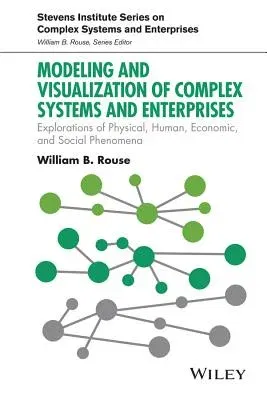Explains multi-level models of enterprise systems and covers modeling
methodology
This book addresses the essential phenomena underlying the overall
behaviors of complex systems and enterprises. Understanding these
phenomena can enable improving these systems. These phenomena range from
physical, behavioral, and organizational, to economic and social, all of
which involve significant human components. Specific phenomena of
interest and how they are represented depend on the questions of
interest and the relevant domains or contexts. Modeling and
Visualization of Complex Systems and Enterprises examines visualization
of phenomena and how understanding the relationships among phenomena can
provide the basis for understanding where deeper exploration is
warranted. The author also reviews mathematical and computational
models, defined very broadly across disciplines, which can enable deeper
understanding.
- Presents a 10 step methodology for addressing questions associated
with the design or operation of complex systems and enterprises
- Examines six archetypal enterprise problems including two from
healthcare, two from urban systems, and one each from financial
systems and defense systems
- Provides an introduction to the nature of complex systems, historical
perspectives on complexity and complex adaptive systems, and the
evolution of systems practice
Modeling and Visualization of Complex Systems and Enterprises is
written for graduate students studying systems science and engineering
and professionals involved in systems science and engineering, those
involved in complex systems such as healthcare delivery, urban systems,
sustainable energy, financial systems, and national security.

